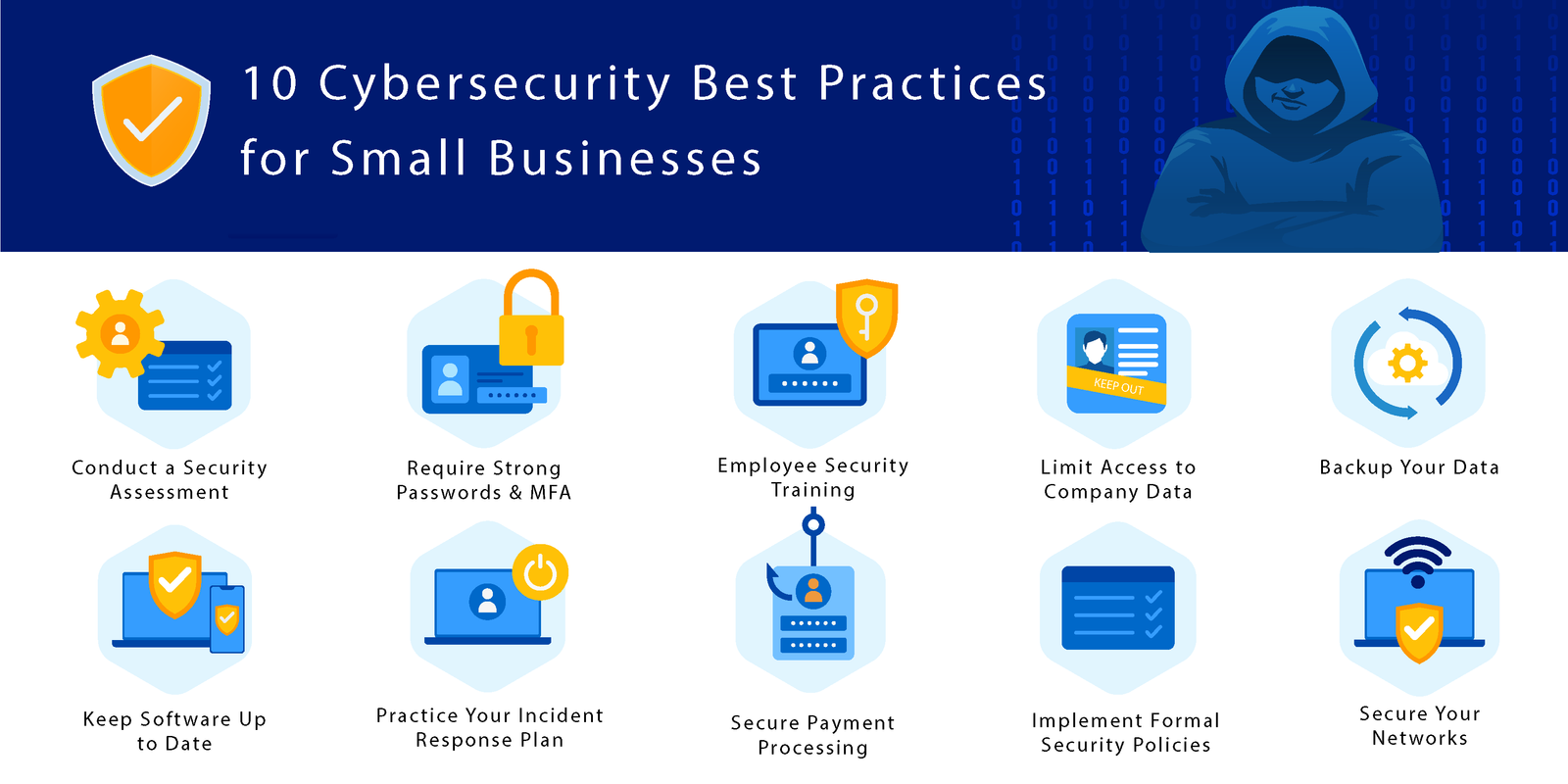How to Protect Your Business from Cyber Attacks
In today’s digital age, businesses face an ever-growing array of cyber threats that can compromise sensitive data, disrupt operations, and damage reputations. To safeguard your business from these cyber attacks, it’s crucial to implement effective security practices. This blog post outlines essential strategies to protect your business, ensuring robust defenses against potential threats.
1. Implement Strong Access Controls
1.1 Use Multi-Factor Authentication (MFA)
Multi-Factor Authentication (MFA) adds an extra layer of security by requiring users to provide two or more verification factors to access systems and data. This significantly reduces the risk of unauthorized access due to compromised passwords.
1.2 Enforce Role-Based Access Control
Implement role-based access control (RBAC) to ensure that employees only have access to the information and systems necessary for their roles. This minimizes the risk of sensitive data exposure and reduces potential attack vectors.
2. Regularly Update and Patch Systems
2.1 Keep Software Up to Date
Regularly update operating systems, applications, and firmware to patch known vulnerabilities. Software updates often include critical security fixes that protect against emerging threats.
2.2 Automate Patch Management
Implement automated patch management tools to streamline the process of applying updates and patches. This ensures that your systems remain protected without manual intervention.
3. Educate and Train Employees
3.1 Conduct Cybersecurity Training
Provide regular cybersecurity training for employees to increase awareness of common threats such as phishing and social engineering. Training should cover safe practices for handling sensitive information and recognizing potential security risks.
3.2 Promote Safe Practices
Encourage employees to use strong, unique passwords and avoid sharing login credentials. Implement guidelines for safe email and internet use to prevent accidental exposure to threats.
4. Deploy Comprehensive Security Solutions
4.1 Install Firewalls
Firewalls act as a barrier between your network and potential threats, filtering incoming and outgoing traffic to block malicious activities. Ensure that firewalls are configured correctly and regularly updated.
4.2 Use Antivirus and Anti-Malware Software
Deploy antivirus and anti-malware software to detect and remove malicious programs. Regularly update these tools to protect against the latest threats.
4.3 Implement Intrusion Detection and Prevention Systems (IDPS)
Intrusion Detection and Prevention Systems (IDPS) monitor network traffic for signs of suspicious activity and take action to prevent potential breaches. Use IDPS to detect and respond to security incidents in real-time.
5. Secure Your Network
5.1 Encrypt Sensitive Data
Encrypt data both at rest and in transit to protect it from unauthorized access. Encryption ensures that even if data is intercepted or accessed, it remains unreadable without the appropriate decryption keys.
5.2 Segment Your Network
Network segmentation involves dividing your network into smaller, isolated segments to limit the spread of cyber attacks. Implement segmentation to contain potential breaches and protect critical assets.
5.3 Secure Wi-Fi Networks
Use strong encryption (such as WPA3) for Wi-Fi networks and regularly change passwords to prevent unauthorized access. Avoid using default credentials for network equipment and ensure that guest networks are separate from the main network.
6. Develop and Test Incident Response Plans
6.1 Create an Incident Response Plan
Develop a comprehensive incident response plan that outlines procedures for responding to cyber incidents. The plan should include roles and responsibilities, communication strategies, and steps for containing and mitigating attacks.
6.2 Conduct Regular Drills
Regularly test your incident response plan with simulated drills to ensure that your team is prepared to handle real-world scenarios. Drills help identify gaps in the plan and improve response effectiveness.
7. Backup Your Data
7.1 Implement Regular Backups
Perform regular backups of critical data to ensure that you can recover from data loss or ransomware attacks. Store backups in a secure location, preferably offline or in a separate network segment.
7.2 Test Backup Restoration
Regularly test backup restoration processes to verify that backups are functional and data can be recovered promptly. Testing ensures that backups are reliable and ready for use in an emergency.
8. Monitor and Audit Systems
8.1 Implement Continuous Monitoring
Use monitoring tools to continuously track network activity, detect anomalies, and identify potential threats. Continuous monitoring provides real-time insights into the security status of your systems.
8.2 Conduct Regular Security Audits
Perform regular security audits to assess the effectiveness of your security measures and identify areas for improvement. Audits help ensure that your security practices are up-to-date and aligned with industry standards.
Conclusion
Protecting your business from cyber attacks requires a proactive and comprehensive approach to cybersecurity. By implementing strong access controls, regularly updating systems, educating employees, deploying security solutions, and preparing for incidents, you can build a robust defense against potential threats. Prioritizing cybersecurity best practices not only safeguards your data and systems but also ensures business continuity and resilience in an increasingly digital world.



